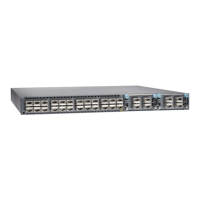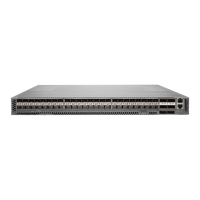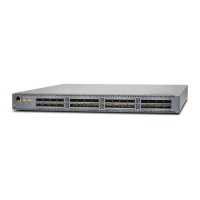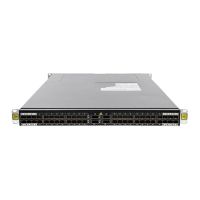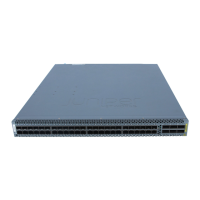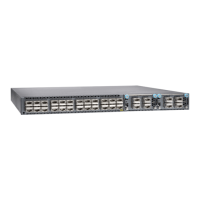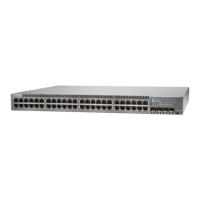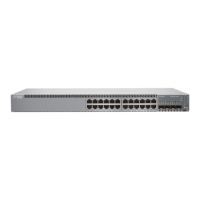Network Ports
CAUTION: Do not place a copper transceiver in an access port directly above
or below another copper transceiver. Internal damage to the access ports
and switch can occur. For copper transceivers, we recommend either using
the top port row exclusively, or the bottom port row exclusively.
The QFX5110-48S device ports (0 to 47) support:
•
10-Gbps SFP+ transceivers
•
1-Gbps SFP transceivers
•
SFP+ direct attach copper (DAC) cables
•
SFP+ active optical cables (AOC)
The QFX5110-48S uplink ports (48 to 51) support:
•
100-Gbps QSFP28 transceivers
•
40-Gbps QSFP+ transceivers
•
100-Gbps AOC
•
40-Gbps AOC (Junos OS 18.3R1 and later)
•
100-Gbps QSFP28 DAC cables
•
40-Gbps QSFP+ DAC cables
•
40-Gbps QSFP+ to SFP+ DACBO cables (40-Gbps breaks out to 10-Gbps for copper
connections)
•
40-Gbps AOCBO cables (40-Gbps breaks out to 10-Gbps for fiber connections)
Channelizing Interfaces
For downstream traffic, the QFX5110-48S has 4 physical or 16 logical ports that can be
used for port channelization. The default 100-Gigabit Ethernet ports can be configured
as 40-Gigabit Ethernet, and in this configuration can either operate as dedicated
40-Gigabit Ethernet ports or can be channelized to 4 independent 10-Gigabit Ethernet
ports using copper or fiber breakout cables.
To channelize the ports, manually configure the port speed using the set chassis fpc
slot-number port port-number channel-speed speed command, where the speed can be
set to 10-Gigabit Ethernet, 40-Gigabit Ethernet, or 100-Gigabit Ethernet. The ports do
not support auto-channelization.
Virtual Chassis and Virtual Chassis Fabric
To connect QFX5110 switches as members in a QFX5110 Virtual Chassis, you need a pair
of dedicated ports on each switch and cables that link each member in the Virtual Chassis
into a ring topology. Each member in the ring has at least one direct Virtual Chassis port
Copyright © 2019, Juniper Networks, Inc.28
QFX5110 Switch Hardware Guide
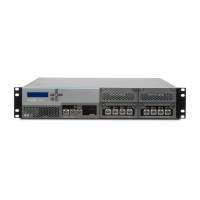
